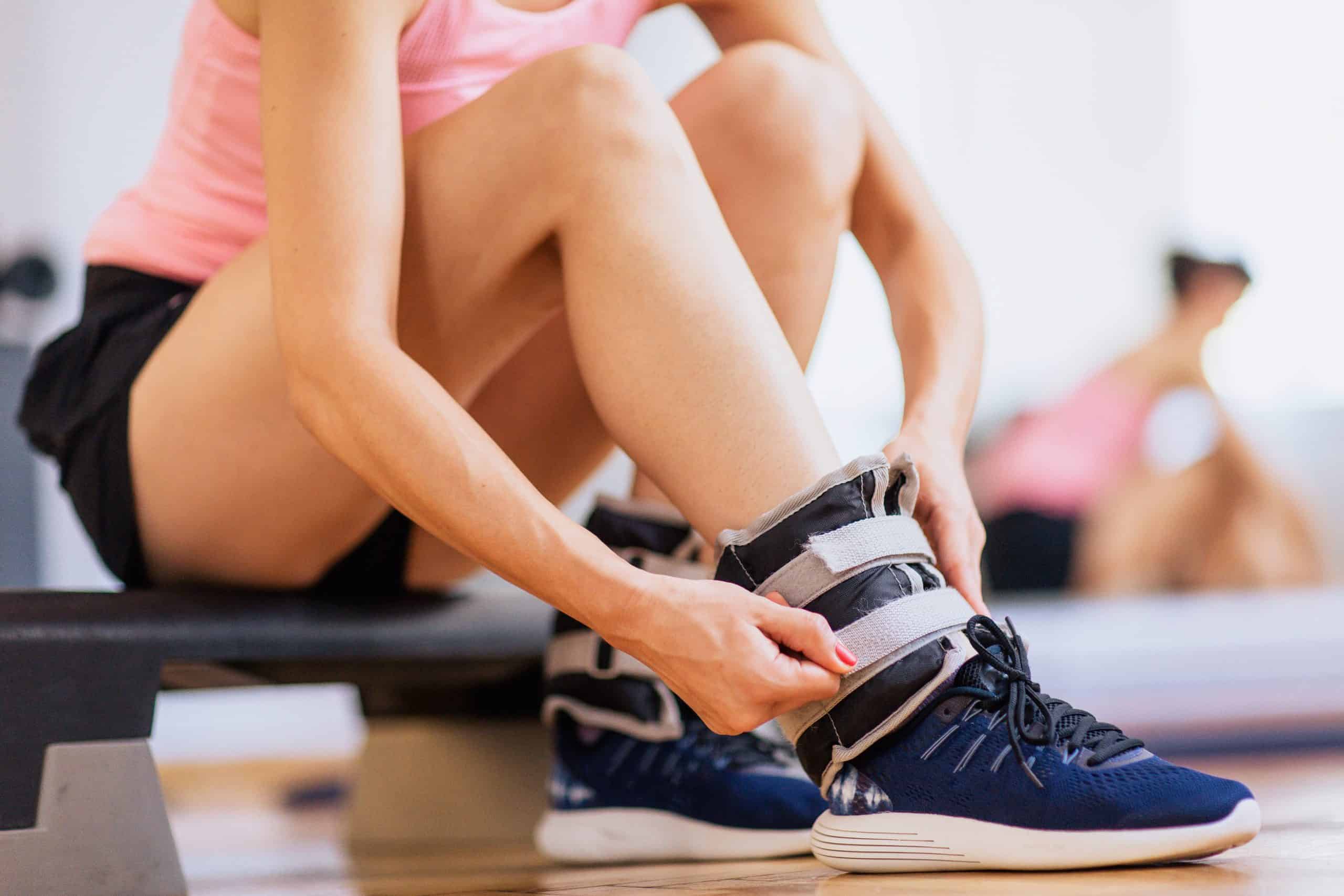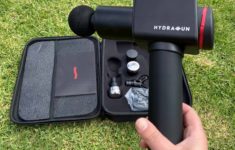There are many ways to scale the intensity of your workouts. One simple strategy is adding ankle weights to your routine. They add gravitational resistance to your workouts, which ultimately helps you to get the most out of your sessions.
If you are looking for a pair to add to your fitness tools stash, this article will come in handy. You will learn the different types, how to choose, how to use, and the benefits they have.
Table of Contents
Types of Ankle Weights
There are two main types of ankle weights; fixed weight ankle weights and adjustable ankle weights.
Fixed Ankle Weights
As the name suggests, this type comes with fixed weights. They are available from 100g to 12kg. These are ideal for beginners or people that are not interested in making them their primary workout tools. But, you have to test the weight first to ensure they are comfortable and ideal for your fitness levels.
Adjustable Ankle Weights
This type allows you to add weight bars and build up the resistance. With this type, you do not have to buy multiple sizes as you adjust the weight as your strength levels advance. These come in handy for those that need them as central workout tools for strength training.
Additionally, they are suitable for those that work out at home and need options for multiple users. However, they are quite expensive compared to the fixed ankle weights. But, they save you a lot more in the long run since you do not have to buy others in different weights.
How to Select the Right Ankle Weights
It is essential to consider some factors to ensure you get functional and comfortable ankle weights. You want to ensure the model you choose suits your needs and is safe to use.
Materials
Unfortunately, most wrist and ankle weights come in iron powder and fine lead. These materials are not safe for the environment, and you should avoid models with these. Consider getting weights filled with sand or water.
But, ensure the overall material is of high-quality, comfortable, and breathable. The best adjustable ankle weights come with neoprene padding to protect against chafing as you work out.
Also, ensure they have reinforced stitching to withstand the weights. If you intend to use them for early morning or late evening runs, consider those with reflective trim for your safety.
Weight
You may think that higher weights result in quicker progress. But, this is not true at all. Starting on heavier weights than your strength levels could result in injury. It is essential to understand how many pounds your body can handle at a particular stage of your fitness. Here is a simple guide:
0.5 to 2kg
This size is ideal for walking and light cardio exercises. They are much more forgiving than heavier ones and do not strain your muscles as you exercise. You can use these for aerobics as well. Also, if you are starting on strength training, these are the best.
They are low-impact and allow your body to adapt to using them slowly. At first, you may find them too lightweight for exercise, but as time goes by, you will notice an improvement in your strength.
2 to 3kg
These weights are a perfect upgrade from the 1.5kg ones. Once you notice an increase in resistance and endurance, these weights will help you build up the strength. The ankle weights are suitable for jogging and leg exercises. You can use them for leg curls, leg squats, and leg extensions.
3 to 10kg
These weights are ideal for advanced trainers that have their strength levels up and running. These work well for people that can handle the weight while performing different challenging workouts.
When using such weights, it is essential to exercise caution as they can cause injury. Your body needs to have adapted to lighter weights for you to advance. On this note, you should not go from a 3 lb size to a 10 pounds size at once. The last thing you want to handle is ankle injury; therefore, upgrade gradually, giving your body time to adapt.
Benefits of Ankle Weights
Ankle weights are useful for a variety of workouts. You can use them for running, jogging, and running. Ankle and wrist weights work together to maximize your workout efficiency. As you swing your arms and strides, the weights build resistance, helping you make the most of your exercise.
Surprisingly, you can use leg weights for cycling. Ankle weights target lower body muscles when cycling, which again builds up your overall strength. The best thing with using ankle weights is that you can apply them differently depending on the muscles you are targeting.
Adding these to your workout routine can increase your heart rate, thanks to the resistance they have. The higher heart rate results in higher oxygen consumption. These effects ultimately add on to your performance, giving you even better results in the long run.
Related post: Read our article The Best Heart Rate Monitors if you want to track your progress.
If you are looking to add on strength and endurance, ankle weights are a viable option. With the resistance, your body adjusts to carrying the weights during activity, which in turn results in toning, endurance, and overall strength.
Ankle weights come in handy for people looking to improve their strength but do not have access to strength training gym machines. They put resistance on your leg movements, and you can conveniently use them in the comfort of your home.
How to Use Ankle Weights
Ankle weights come with straps that you fasten around our ankles. They are easy to use and do not need prior experience or professional help. You only need to tie the adjustable strap and fasten securely.
Most designs come with padded straps, so you do not strain your ankles when working out. The top strap may be tighter than the lower one since the circumference around the ankle is bigger. If you are a beginner, be sure to test the ankle weight first before engaging in a serious workout. That way, you can tell if you need to tighten or loosen the straps for comfort.
Safety When Using Weights
Here are safety tips to ensure you use the weight correctly and prevent injury.
Start with low weights and advance as you go. If you are a complete beginner, avoid adding weights to your routine. If you use some and feel strains in your joints and muscles, then it is not the right time to use them. Take some time to build up the strength and endurance before adding some weights.
Do not use weights all the time. Some people believe that the more you use weights, the better and quicker the results. Doing so can be dangerous, especially if you are just starting. While it is fine to include weights during activity, you should save them for exercise sessions and not the entire day [1].
Ankle weights are not ideal for use by overweight individuals. The body already has enough weight to build resistance and endurance. Adding ankle weights can put a strain on the ankles and result in injury. Wait until your muscles and joints can handle the extra weight.
Not all exercises require the use of ankle weights. For example, if your primary exercise is running, ankle weight can affect the quality of your stride. This effect can, in turn, strain your ankles while trying to put up with the weight.
Seek professional advice if you intend to use weight for therapeutic or rehabilitation purposes. They help with recovery, but overusing them can cause more harm than good. Talk to your doctor about how much weight you can handle, the frequency, and how long you should use them.
FAQ
Ankle weights are good for you as far as building your strength and endurance is concerned. However, they can also result in injury if you use the wrong weight or apply them in some exercises.
When used correctly, ankle weights help to build strength, resistance, and endurance. But, you need the right set and the right ankle weight exercises to reap the benefits.
The right pair of ankle weights should match your fitness levels. If you are a beginner, get lightweight ones to start and advance as you go. For advanced trainers, heavyweight options are ideal. But, you should build up the pounds as your strength increases.
The Bottom Line
It is clear that ankle weights can help you reap more from your workouts. With correct use, you can gain more strength, endurance, and resistance. They can also help you burn more calories and get your heart rate up. If you are on a hunt for the best ankle weights, this article is a great resource.









